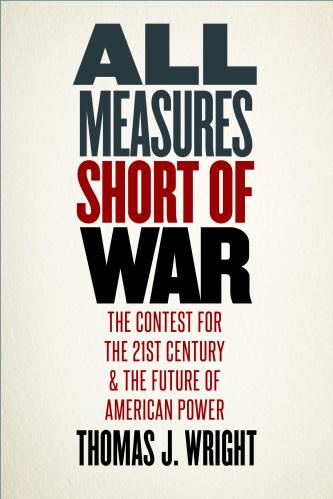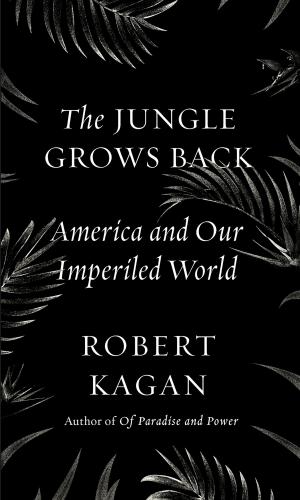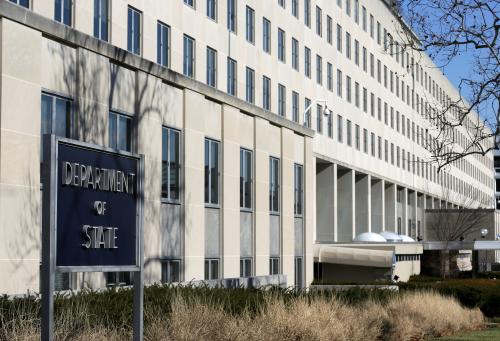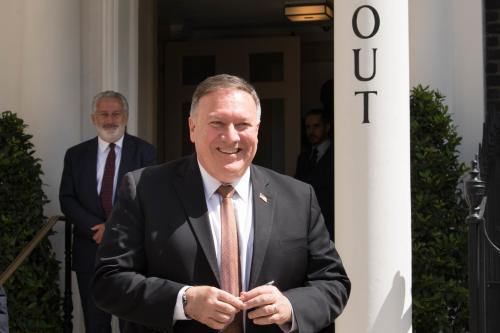Late one evening in 2019, I received a text message from a senior American diplomat abroad: “Can you send me some examples of implementation matrices?” She was in the latter stages of a post-conflict negotiation and inquiring about the part of a peace accord that serves as a kind of project management tool — setting forth commitments, timelines, and a sequence of events agreed by two or more parties to a dispute. The diplomat — experienced, connected, savvy — had rarely before needed to dive deep into this particular pool of technical knowledge, and so reached out for ideas. “What has worked elsewhere and why?” she asked, looking to cross-reference best practices. “What does the data show?”
She and her team got what they needed, but the process should not have to be so ad hoc. If a new administration takes the reins next year, it should, as part of a wider effort to revitalize U.S. diplomacy and to rebuild a decimated State Department, establish a small but dedicated mediation support unit. Such a unit should be staffed by experts whose sole mandate is to ensure our diplomats have the tools they need to succeed in waging peace.
Tradecraft: Third-party mediation
In just the last five years, U.S. diplomats have been involved — directly or indirectly — in peacemaking efforts in Libya, Syria, Yemen, Colombia, Iraq, Afghanistan, Mali, Sudan, and South Sudan, not to mention dozens of other lower-profile disputes and preventive diplomacy efforts. Still other foreign service professionals and political appointees have been asked to design or play roles in complex, multi-party negotiations — toward a deal on Iran’s nuclear program or a climate accord under the U.N.’s Framework Convention, for instance. It is often assumed that mediation and negotiation are skills readily available to anyone engaged in politics or diplomacy, especially veteran diplomats and senior government appointees. But that is not the case: Professional mediation is a specialized, often highly technical, tradecraft in its own right.
Professional mediation is a specialized, often highly technical, tradecraft in its own right.
Too often our forward-deployed diplomats — who understand local contexts and have established relationships in a particular country — are thrust into these roles, when lives and critical interests are at stake, despite having received no specialized training. Peace talks, multi-party negotiations, and other forms of dialogue turn on critical choices over process design, rules and mandates, supporting architecture, negotiation strategy, sequencing, inclusivity, and implementation. A wide range of technical tools and models further shape the implementation of many accords, from ceasefire monitoring mechanisms and power-sharing formulas to natural resource allocation and constitution-making. While our foreign policy institutions are stocked with expertise, including in trade and other bilateral negotiations, no part of the bureaucracy is tasked specifically with these kinds of support. Moreover, as peace negotiations are often fast, fluid, and pressure-packed, diplomats in the room rarely have time to step back and begin educating themselves on sequencing tradeoffs or disarmament and demobilization schemes.
Personalities and political instincts are important ingredients in such scenarios, but they are far from sufficient. Mediation best practice draws on a reservoir of lessons learned, technical competencies, and tools developed, over time, by specialists. No two situations are alike, but there are a wealth of lessons — good, bad, and ugly — from which a mediation unit could help to draw insights and adapt.
The gap
In 2012, American diplomats helped shape the “Geneva process” — a series of U.N.-facilitated talks backed by the U.S., Russia, and others — in an effort to resolve the war in Syria. But few of the officials responsible for Near Eastern affairs had been directly involved in such a process before. “There was a lot of self-educating going on when it came to designing a process,” one told me. Similar circumstances emerged again in 2016, another explained, when the State Department sought to design an international ceasefire taskforce to be co-chaired with Moscow.
In 2013, when South Sudan descended into civil war, I was involved in jump-starting the ensuing peace process. My boss, the American special envoy, and I helped design and then support a multi-stakeholder dialogue facilitated by mediators from an African regional organization. At several contentious junctures — expanding the talks to include non-combatant stakeholders, devising a voting model for decisionmaking, formulating a rotational scheme to allocate government powers — we might have benefited from a standby unit ready to inform our deliberations with examples used elsewhere or scenarios sketching potential eventualities.
Diplomats who supported the Colombian peace process in 2015 reported the same. Transitional justice — including truth-telling, reparations, and accountability — was “arguably the thorniest” of six items on the peace agenda, one told me. And while the U.S. team knew anecdotally of formulas used elsewhere, they reported that a menu of comparative models tailored to Colombia’s circumstances might have helped peace process supporters narrow the gap between government and rebel negotiators.
Diplomatic value add
There’s a simple and cost-effective way to improve U.S. diplomacy in such scenarios: a small mediation advisory unit, staffed by experts who can — when the call comes — offer resources, advice, and, if necessary, direct support. (The United Nations, having recognized a similar need, established an in-house mediation support unit in 2006; the European Union in 2011.) Given time-honored turf battles inside the State Department and between U.S. government agencies, it is essential that such a service be demand-driven. Experts in a mediation unit should not insert themselves into a process or look to promote their suite of services, as this is exactly the kind of thing that makes forward-deployed diplomats, and the State Department’s regional bureaus, recoil. Rather, such a team should respond to requests from diplomats and special envoys in three functional areas.
First, the advisory unit should act as a knowledge repository, collecting, synthesizing, and sharing information on lessons learned — from inside and outside government. Its experts could offer analysis on comparative models and tailor options to an emerging set of circumstances, whether on the design of a peace process, a negotiating strategy, an implementation tool, or the range of technical competencies that arise in most peacemaking scenarios. Suppose a new conflict in Southeast Asia has characteristics similar to a recently resolved civil war in Central America — both are highly centralized systems led by a rebel group turned dominant political party, or both have seen unprecedented use of social media as an instrument of conflict. What tools or approaches used in Central America might be usefully adapted for Southeast Asia, which don’t translate well, and what missteps did U.S. or other process supporters make that might be headed off if identified early?
This service would be a notable improvement over current practice, in which State Department and national security staffers too often cobble together memos — drawing heavily from Google — that would be better produced and managed by a team of dedicated experts. (Another problem: Large bureaucracies are bad at information management, and background memos that could inform future policy choices often disappear into bottomless computer servers while a future staffer scrambles to reproduce the same memo.)
Second, an advisory unit could cultivate links with experts in negotiation theory and organizations dedicated to mediation best practice — such as the U.S. Institute of Peace, the University of Notre Dame’s Kroc Institute for Peace Studies, and the Geneva-based Centre for Humanitarian Dialogue — soliciting options papers or specific competencies as desired. The advisory unit could also fill a gap in training our diplomats, both in specialized content and in what new resources are available to them. Each fall semester I work with talented mid-career students who come from jobs in U.S. foreign policy, more than a few of whom have recounted stories of learning on-the-fly in complex negotiations. Indeed, every year aspiring U.S. diplomats arrive at the Foreign Service Institute (FSI) in Arlington, Virginia, for a seven-week orientation, with instruction in policymaking, inter-agency operations, and cross-cultural communication. But unlike some countries’ foreign service schools, the institute offers no training in mediation and just two short modules in negotiation for more advanced diplomats — too few of whom ever get the chance to enroll in such a course. A new unit could offer regular trainings in mediation tradecraft to the diplomats most likely to need them, and work with FSI to expand its curriculum.
Lastly, the mediation support unit could, upon request, deploy a relevant expert to support an American negotiating team abroad. That expert might come from the unit itself, or be drawn from rosters actively maintained by the unit (i.e. lists of officials from across the U.S. government who have experience in specialized matters, be it heavy weapons exclusion zones or shared administration of oil export pipelines). Suppose a country rich in copper is emerging from a civil war, and control of its lucrative copper mines is hotly contested by warring combatants. An official with technical knowledge of natural resource allocation models and precedents could be invited to join senior U.S. diplomats on the ground. This kind of reinforcement already happens on occasion, as officials draw on legal advisers, military personnel, staff from various functional bureaus, and sometimes just on trusted colleagues. Such maximization of personnel and relationships should of course continue, but establishing an institutional capacity would better ground and amplify these efforts, and could be achieved with very few resources.
A bureaucratic home
As in any bureaucracy, turf battles are both a cancer and a way of life. Specialized offices often find themselves irrelevant to the policy process, even if there is a strong rationale for their existence. As such, a mediation unit will add value only if special care is given to its placement within the bureaucracy, its staffing profile, and its relationship to primary users—including the secretary of state and other top tier negotiators.
I am not the first to suggest a unit. The State Department’s Bureau of Conflict and Stabilization Operations (CSO) — an office whose mandate dovetails with the mediation work outlined here — has attempted to fill this gap, including by supporting peace monitoring mechanisms and developing negotiation modeling tools. But these efforts never got off the ground, in part because the fledgling bureau has never realized its objective or been embraced by the rest of the department — including the regional bureaus that wield the most influence. CSO officials have historically had to lobby their way into policy processes, their inputs and resources often ignored, their support not always trusted.
The CSO bureau is, in theory, where an advisory unit might best be housed, and if rehabilitated and/or restructured, it might still be an appropriate bureaucratic home. But absent drastic changes, other options come to mind. One is to attach it to the secretary of state’s policy planning staff; another is to house it within the office of the under-secretary for political affairs, to whom the regional bureaus formally report. (The job of a mediation advisory team could also conceivably be outsourced to external organizations, but a number of currents — including government stipulations on classification — run against outsourcing this function altogether.)
To prevent death by bureaucracy, a mediation advisory unit should be staffed by experts from outside the foreign service and with direct experience in mediation, negotiation theory, peace process design, or one of the aforementioned technical areas. U.S. institutions do far too little to attract talent from outside the government, and these positions are ideal candidates for a “Schedule B” contract — an underused hiring mechanism that recruits exclusively on the basis of special expertise.
After several years of decay, it is time to rebuild American foreign policy and revitalize our diplomatic machinery.
On staffing, a Goldilocks metric should also be applied: If the unit is headed by someone too senior (e.g. a retired ambassador known for a high-profile peacemaking effort), the diplomats in need won’t pick up the phone to ask for help, for fear of being supplanted, upstaged, or otherwise burdened. If the staff is too junior, diplomats will resist being saddled with the task of educating on the job. Lastly, it is worth repeating that this unit must be driven by the demands of its customers, its contributions tailored to requests made by those colleagues at the negotiating table.
If a mediation advisory unit is championed by a new secretary of state, and given a chance to demonstrate its value, these bureaucratic challenges can be overcome. After several years of decay, it is time to rebuild American foreign policy and revitalize our diplomatic machinery. Those now sketching blueprints should include a mediation advisory unit — an easy and cost-effective fix that will strengthen American diplomacy and better equip our diplomats to wage peace.








Commentary
Revitalizing American diplomacy: Why mediation support should be part of the foreign policy rebuild
August 12, 2020